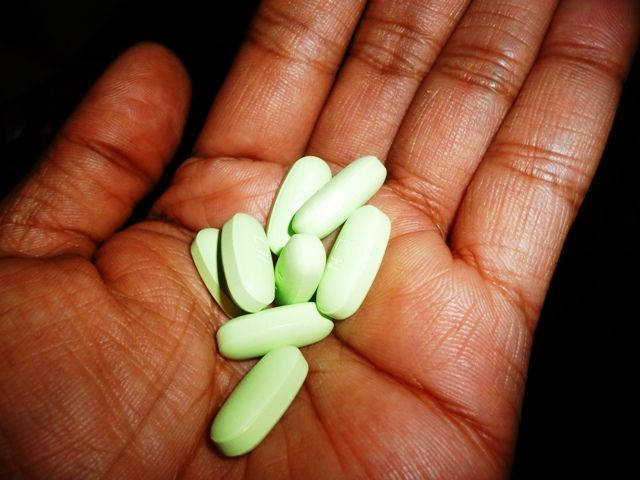Antibiotics Harm Healthy Cells And Vital Functions In The Body; Are Medicines Helping Patients At All?

Antibiotic use has become quite prevalent in recent years, preventing many deaths from disease and bacterial infection. But, antibiotics are also known to cause quite a few adverse side effects, especially when taken for long-term regimens. These effects include kidney damage, tendinitis, and other forms of organ damage. But how does this happen if antibiotics are usually specific to the bacteria that they are trying to kill in the body?
Many antibiotics work by actually disrupting normal bacterial functions, such as growth or their forms of protection. Some of the antibiotics can create reactive oxygen species (ROS) throughout the body. The ROS is lethal to healthy cells and can potentially harm bacterial cells. The ROS start to kill energy sources as well as the metabolic machinery, known as the mitochondria, in human cells. The ROS are thought to bind to bacterial DNA and dissociate it, therefore killing the bacteria, as the bacteria no longer have genetic information. However, ROS are not terribly specific and can begin to damage all the cells and metabolic machinery in the body, not just in bacterial cells. This is known as oxidative tissue damage and can be especially harmful if a person's immunity is already compromised by a bacterial infection.
A new study has found that oxidative tissue damage from antibiotic treatment is not only a risk people take when they are on long term treatment regimens, but it can also be alleviated by an antioxidant. The U.S. Food and Drug administration-approved antioxidant, N-acetylL-cysteine (NAC), was tested as a potential therapy for oxidative stress.
Oxidative stress is problematic for healthy cells as the reactive oxygen species interact with cells at all levels.
The researchers confirmed that only antibiotics that are specifically bactericidal, or kill specific bacteria by disrupting protection mechanisms or blocking bacterial growth, create the harmful reactive oxygen species. These include ciprofloxacin, ampicillin and kanamycin. Other antibiotics do not work to kill the bacteria, but rather inactivate it by blocking its ability to make proteins necessary for its survival, such as tetracycline. All four of these antibiotics were tested in this study. Researchers found that ROS was not changed by the number of cells dying, but rather duration of treatment. This indicates that the ROS comes from the antibiotic itself, instead of the bacteria or the bacteria's death. In human cells treated for six hours, there was less than half of the number of ROS than in mice treated with antibiotics for 96 hours.
When looking for the level of damage the ROS created, researchers found very few hallmarks of harm to whole cells during shorter treatments. However, given a 96-hour treatment, cells showed nearly five times more deterioration when compared to a six-hour treatment. But, does the ROS enter the cell and cause damage there too?
The cell's metabolic machinery, or mitochondria, is important in making energy. If a cell cannot make energy, it dies almost immediately because it has no energy to perform any of its vital processes. Altering metabolic machinery is a key part of antibiotic function, but is also a nonspecific function. Researchers looked at mitochondrial inhibition in mice with six and 96 hours of antibiotic treatment. At six hours, there was much metabolic activity, while at 96 hours there was next to none in cells treated with bactericidal antibiotics. Compared to untreated cells, the cells treated with antibiotic showed that the metabolic machinery operated 25 to 40 percent less. Similarly, the researchers found that after a 96-hour treatment, the mitochondria in cells were misshapen or altogether destroyed, indicating that the ROS had targeted the mitochondria, even though they did not belong to a bacteria.
However, there is a way to save these cells from reactive oxygen. An antioxidant called NAC, which acts to make reactive oxygen species less reactive, has been approved for use by the Food and Drug Administration in situations like this. When NAC was added to bactericidal antibiotics, the oxidative species present decreased nearly two fold; the mitochondria appeared to be in proper working order and were able to metabolize nutrients to energy. Similarly, whole cells themselves were no longer deteriorated at any point after NAC was added. The NAC was effective whether added to a six-hour treatment or a 96-hour treatment.
While more needs to be done to establish the safety and efficacy of long-term use of NAC in humans, the finding here is promising. While bactericidal antibiotics may be potentially dangerous to cells, there is an effective treatment that can prevent many adverse side effects of long-term antibiotic use.
Source: Kalghati S, Spina CS, Costello JC, et al. Bactericidal Antibiotics Induce Mitochondrial Dysfunction and Oxidative Damage in Mammalian Cells. Science Translational Medicine. 2013.



























